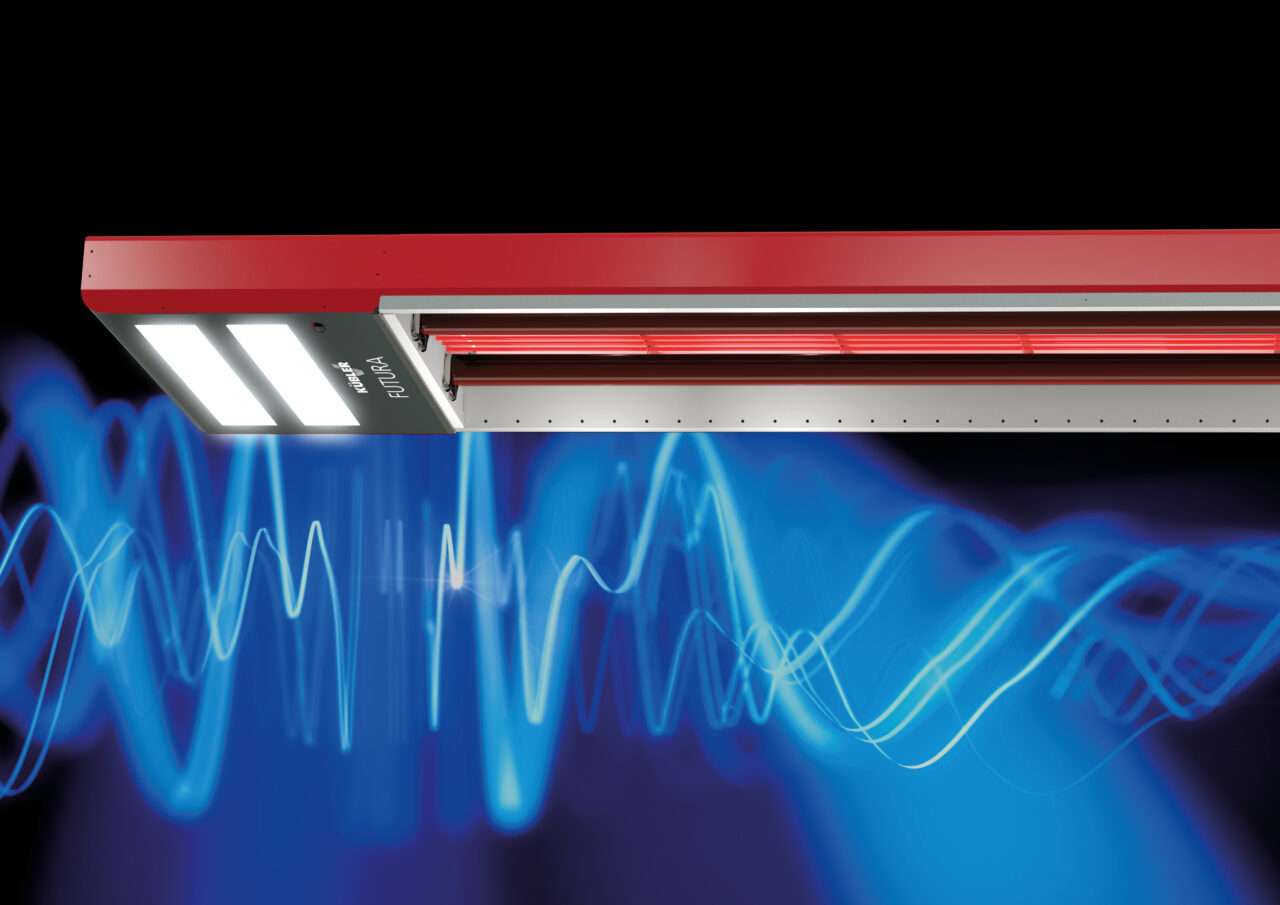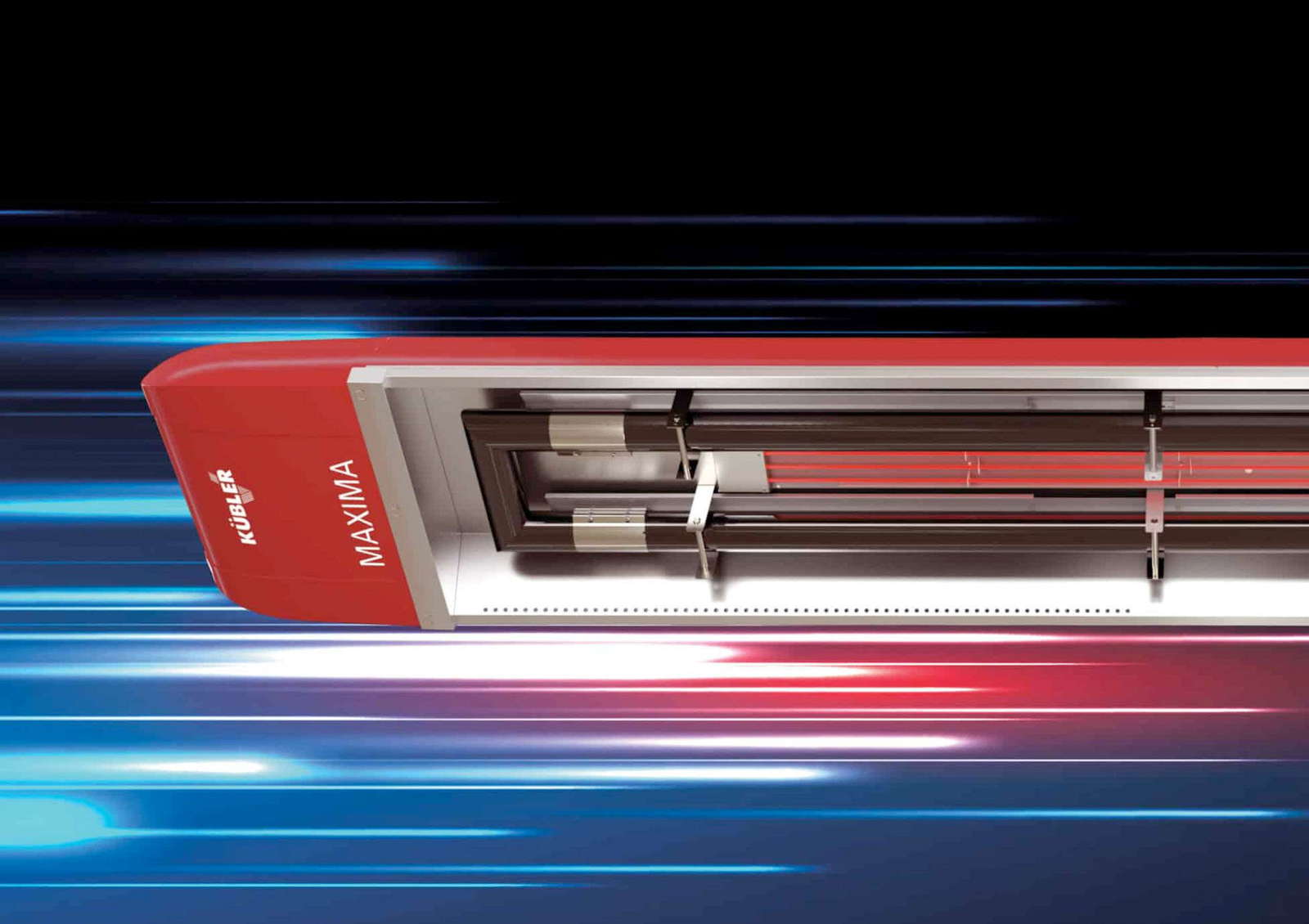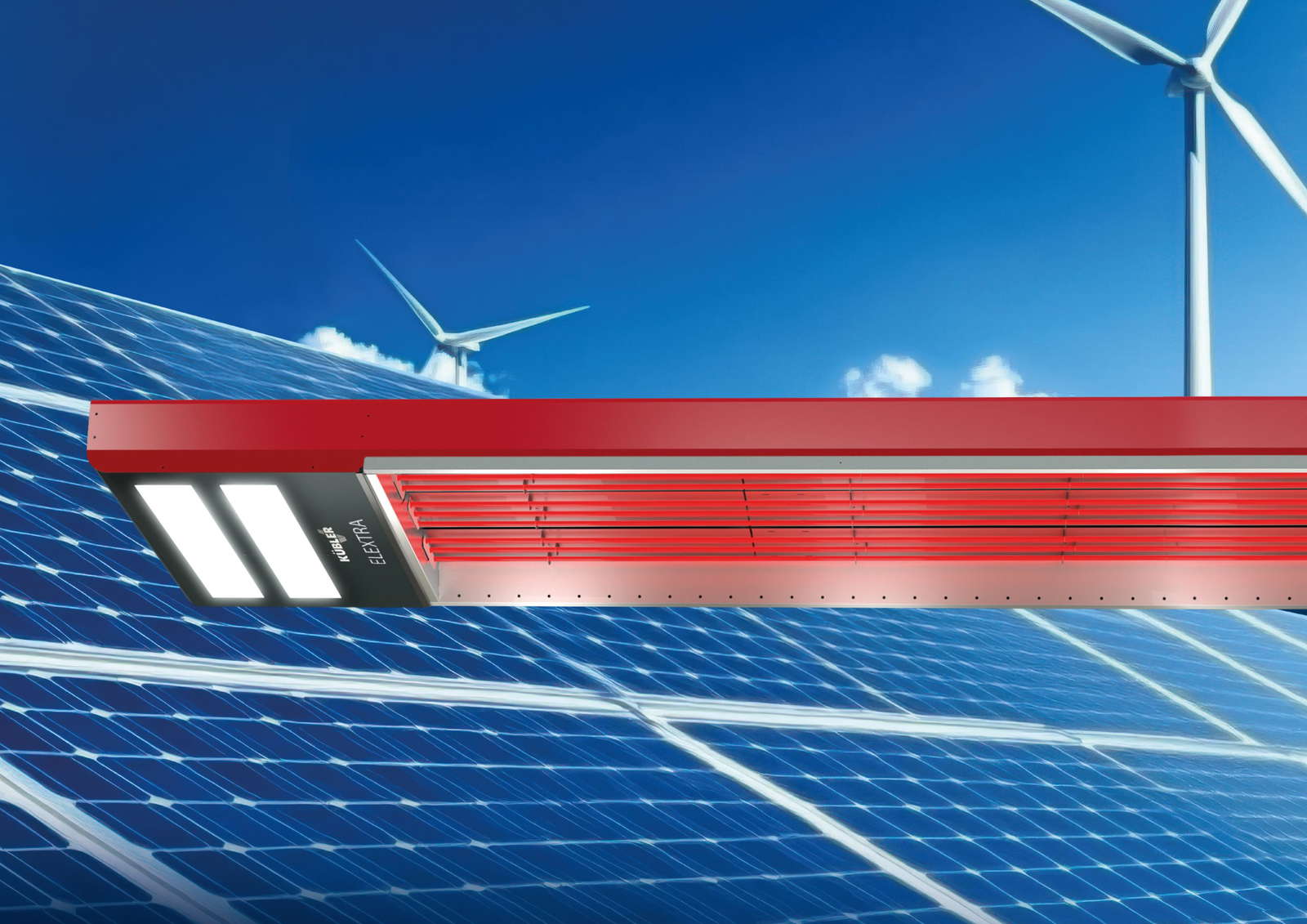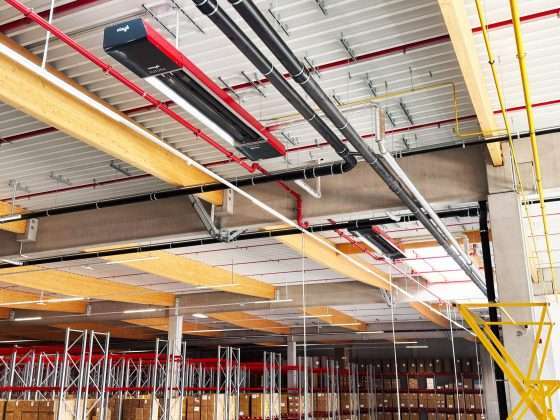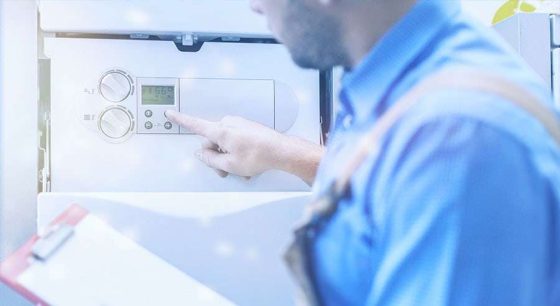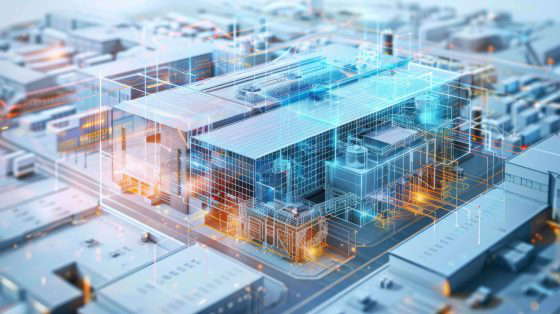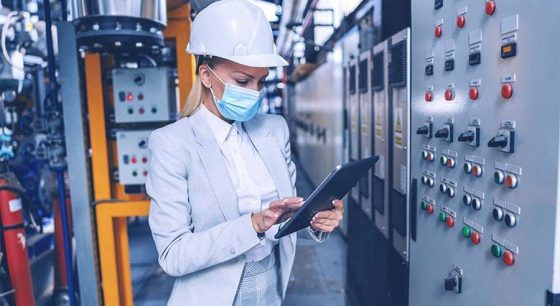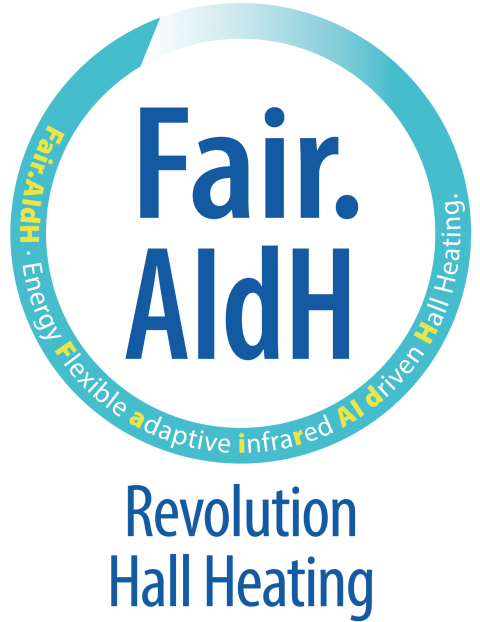Heating halls: 6 heating systems at a glance
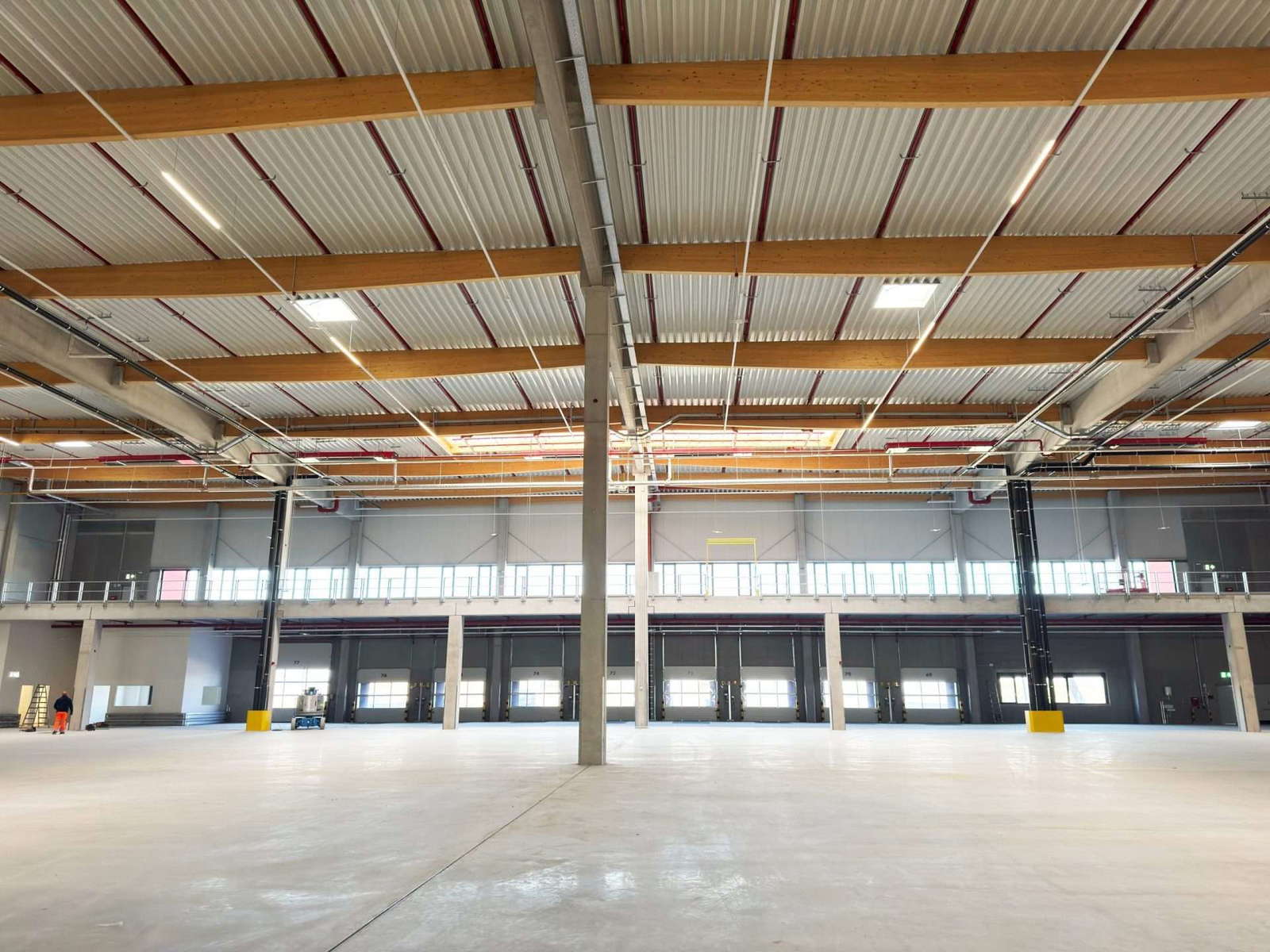
Getting started - the difference between centralized and decentralized systems
Systems for heating halls are divided into centralized and decentralized systems. Centralized systems require a separate boiler room in which heat is generated in so-called heat generators. This heat is then conducted to the heating devices - known as heat exchangers - where it heats the heating medium inside, which in turn provides heat for heating. This process is also known as "indirect heating". However, some of the heat is already lost during transportation.
Decentralized systems, on the other hand, use the primary energy directly in the usable space or the heating device itself, which only generates the heat where the employees need it. They are, so to speak, heat generators and heat exchangers in one device, do not require a separate boiler room and can be used more flexibly and quickly. In addition, there are no heat or energy losses due to storage and transport lines.
Hot air heating for halls: You have these options
The basic principle behind warm air heating systems is very simple and quickly explained: a fan directs warm air into a room and heats it in this way. If you want to use warm air to heat halls, you have two options:
Decentralized heat supply via hot air generator
With direct-fired hot air heaters, the burner generates the heat directly in a decentralized manner. Air drawn in on the secondary side is then heated by means of a heat exchanger and blown into the hall.
When heating halls with the help of warm air heaters, it is possible to use room air-dependent and room air-independent operating modes. This means that the appliance either draws in fresh air or heats the air from the hall itself. The latter is particularly practical. As warm air is known to rise upwards (convection), the air in the working or floor area tends to be colder. Room air-dependent warm air heaters feed precisely this cool air back into the warm air generation system and thus ensure that it is replenished. Room air-independent appliances, on the other hand, often also use the heat from the flue gas duct to heat the air supplied from outside.
Central heating of halls with an air heater
Indirectly heated air heaters, also known as air heaters, do not heat the air themselves. Instead, a separate boiler or central heating system is connected here, which heats the heat exchanger externally. The air heater also draws in air and then passes it through the heat exchanger, which heats it. The warm air can then be blown into the hall or distributed via air ducts. If you want to use an air heater to heat halls, you should again consider convection and plan for warm air recirculation or ceiling fans to provide at least partial relief.
Panel heating systems for heating halls
You can install panel heating in the floor, ceiling or walls. Underfloor heating is probably the most widespread, but the system behind it is basically the same. For underfloor heating, thin pipes are laid across the entire floor in a snake-like pattern during the construction of the hall. The underfloor heating can also be installed subsequently in an additional screed layer. Note: In practice, this option is rather unrealistic, as the entire hall, including machinery, would have to be cleared out and would not be available for use for weeks.
To heat halls, an externally heated heating medium (e.g. water) is fed through these pipes. The heat generated in this way can be felt directly in the floor and is only slowly released into the room, but remains there for a while even if the heating is switched off briefly.
Please note that hot water systems are very slow and sometimes require days to heat up. They cannot be switched on or off at short notice and generally have to remain in operation 24/7 for the entire heating period. You should also be aware that if shelves or machines are anchored too low, this can damage the heating hoses.
Not to be forgotten: The infrared radiant heaters
When heating halls via radiant heat, a distinction is made between light and dark radiators. There are also radiant ceiling panels.
Radiant ceiling panels
Also known as a "hot water radiant ceiling panel", this system involves pipes being welded onto a metal plate directly under the ceiling. Similar to underfloor heating, hot water heated by an external heat generator flows through these pipes, transferring the heat to the entire structure. A radiant panel then directs the heat downwards into the room, where it raises the surface temperatures of all surfaces.
You should install an insulating layer between the ceiling and the radiant ceiling panel to reduce heat loss upwards. If you want to use radiant ceiling panels to heat halls, you should also plan for a large heating surface of approx. 15-20 % of the ceiling surface. Because water boils at a temperature of 100 °C, the temperature level of this heating system - similar to underfloor heating - must be relatively low. This also applies to the infrared efficiency of radiant ceiling panels. Please bear this in mind when designing your heating system.
Infrared dark radiators for efficient heating of halls
Dark radiator, auch als Schwarzstrahler bekannt, sind eine Variante der Infrarot-Strahlungsheizungen. Die Beheizung von Hallen erfolgt hier dezentral durch einzelne Geräteeinheiten, die durch einen Brenner eine lange Flamme in einem Strahlrohr erzeugen. Entstehende Abgase werden geschlossen nach außen geführt und können mit der Brennwerttechnik zur Restwärmenutzung verwendet werden. In der Vergangenheit handelte es sich beim Energieträger um Erd- oder Flüssiggas. Die neue Fair.AIdH* Infrarottechnologie oder auch Multi-Energie-IR-Hallenheizung können heute energieflexibel erneuerbare Energien wie Strom oder Biogas und Wasserstoff nutzen. Durch ihre Fähigkeit, variabel die Energieträger zu nutzen, die gerade besonders kostengünstig sind, bieten sie einen skalierbaren, gesetzeskonformen und sicheren Weg in die CO₂-freie Zeit.
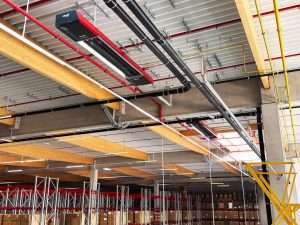
Das Prinzip ist in Hallen sehr effektiv: Reflektoren am Strahlungsrohr lenken die entstandene Wärme in Form von Infrarot-Strahlung in die zu beheizenden Bereiche. Dort sorgt diese erst für Wärme, wenn sie auf die Raumfassung und Oberflächen von Objekten oder Personen trifft – ähnlich wie die Sonne. Der entscheidende Vorteil von Strahlungsheizungen dieser Art ist daher, dass keine warme Luft physikalisch bedingt unter die Decke steigt und zurückgeleitet werden muss. Dieses physikalische Wärmeprinzip und die Möglichkeit, dass Sie Infrarot-Dunkelstrahler auch kurzfristig ein- oder ausschalten und auch einzelne Heizzonen unterschiedlich regeln können, sorgt für einen enormen Effizienzvorsprung dieser Systeme. In der Praxis sind Energieeinsparungen von 50 bis 70 Prozent die Regel.
Bright radiators: heat generation via ceramic
Bright spotlight work in a similar way to dark radiators. A gas-air mixture is burned on ceramic plates, generating heat and emitting infrared radiation. Reflectors direct the rays into the working area. However, the fundamental difference lies in the combustion process. In bright radiators, this takes place openly - and so the exhaust gases initially remain in the room. Indirect removal of the exhaust gases is therefore necessary. Anyone relying on radiant heating systems for heating halls must therefore ensure adequate ventilation.
What is particularly worthwhile for heating halls?
Which heating system is the right choice for you depends entirely on your usage profile and your economic requirements. For room heights of 4 meters or more, however, infrared dark radiators are recommended here, as they are particularly well designed for the physical characteristics of halls and are characterized by comparatively low investment costs with high efficiency, flexibility and operational reliability. Let's talk about this in a personal meeting - or find out more with our Configurator to find out which heating system is best suited to your property!
-
Bestandsgebäude: Keine Pflicht zum Einsatz erneuerbarer Energien Auf dem Weg in die CO2-freie Zeit ist Energieeffizienz die vielleicht wichtigste Säule der Dekarbonisierung – denn als „low hanging fruit“ sind Effizienzmaßnahmen zur Reduktion von CO2 meist einfacher, schneller und kostengünstiger wirksam, als die Substitution durch erneuerbare Energien. Deshalb werden Hocheffizienz-Lösungen wie Infrarot-Hallenheizungen von KÜBLER, die nachweislich … Continue reading Infrarot-Hallenheizung oder Wärmepumpe?
-
When production is running in the run-up to Christmas, nobody has time for heating control. The main thing is that it is nice and warm in the hall. Once set, the heating runs for the specified operating times.
-
Fair.AIdH – ideale Heizungssysteme für besondere Gebäude Hallen stellen heiztechnisch andere Anforderungen als Büro- oder andere Geschossbauten. „Normale“ warmwassergeführte Heizungssysteme scheitern i. d. R. zwangsläufig an den enormen Raumhöhen und -dimensionen: sie verbrauchen unangemessen viel Energie, bieten wenig Flexibilität und Wärmekomfort, sind kaum variabel steuerbar, heizen Hallendecken statt die Arbeitsbereiche, sind vielfach schlicht unwirtschaftlich und … Continue reading Gewerbe- und Logistikimmobilien entwickeln und wirtschaftlich sinnvoll beheizen
-
Whether in production halls or warehouses, many heating systems currently have a problem: they distribute viruses particularly well in the room. This is counterproductive for many hygiene concepts. But does this mean that heating systems have to stay cold this winter?
